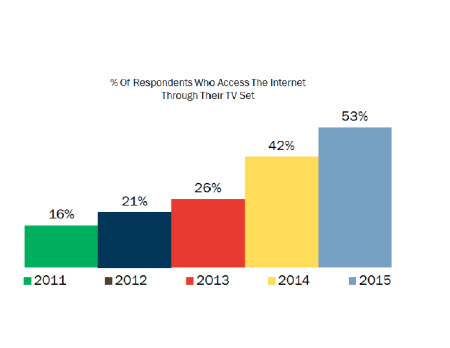Majority of U.S. Households Have Internet-Connected TVs

For the first time, a majority of U.S. viewers have TV sets connected to the Internet, according to data released today by Frank N. Magid Associates and advertising software maker TubeMogul.
Connected TV penetration -- through gaming consoles, set-top boxes and smart TVs -- has more than doubled from 26% of U.S. households in 2013 to 53% this year. The study, based on Magid's online polling of 2,400 Americans last June, found the number rises to 64% among Americans ages 19 to 37.
The trends outlined in the study have broad implications for programming, distribution, advertising and every other corner of the TV and video marketplace. They've been hotly debated throughout this year's edition of the International Consumer Electronics Show in Las Vegas.
The means of connection have also shifted along with the rise in households. In 2013, 64% of connected homes went through a gaming device. This year, that number decreased to 45%. Smart TV connection grew from 29% to 38%, while Roku’s penetration increased 91% to 21% of households. Similarly, Google Chromecast netted a 14% share in less than two years on the market.
This influx of hardware follows directly behind the expansion of content options. In 2015, subscriptions to Netflix, Hulu, or Amazon Instant Video increased by almost 10 percentage points over 2014 levels, to 62% among the general population and 76% among consumers ages 19-37.
Read more at broadcastingcable.com.
The smarter way to stay on top of the multichannel video marketplace. Sign up below.
Jon has been business editor of Broadcasting+Cable since 2010. He focuses on revenue-generating activities, including advertising and distribution, as well as executive intrigue and merger and acquisition activity. Just about any story is fair game, if a dollar sign can make its way into the article. Before B+C, Jon covered the industry for TVWeek, Cable World, Electronic Media, Advertising Age and The New York Post. A native New Yorker, Jon is hiding in plain sight in the suburbs of Chicago.

